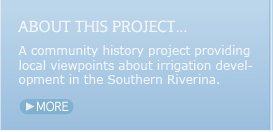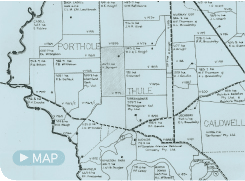 |
 |
||
 |
 |
||
|
|||
|
The irrigation system in the NSW Murray Valley was developed by the NSW Government between the 1930s and 1960s... |
In 2005 Murray Irrigation undertook an oral history project to record memories of irrigation development and the impact it had on the region... |
||
| sitemap • credits
& references • copyright • local
history links • contact & contribute • VISITORS |
|||

